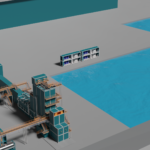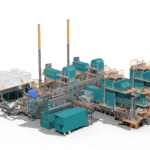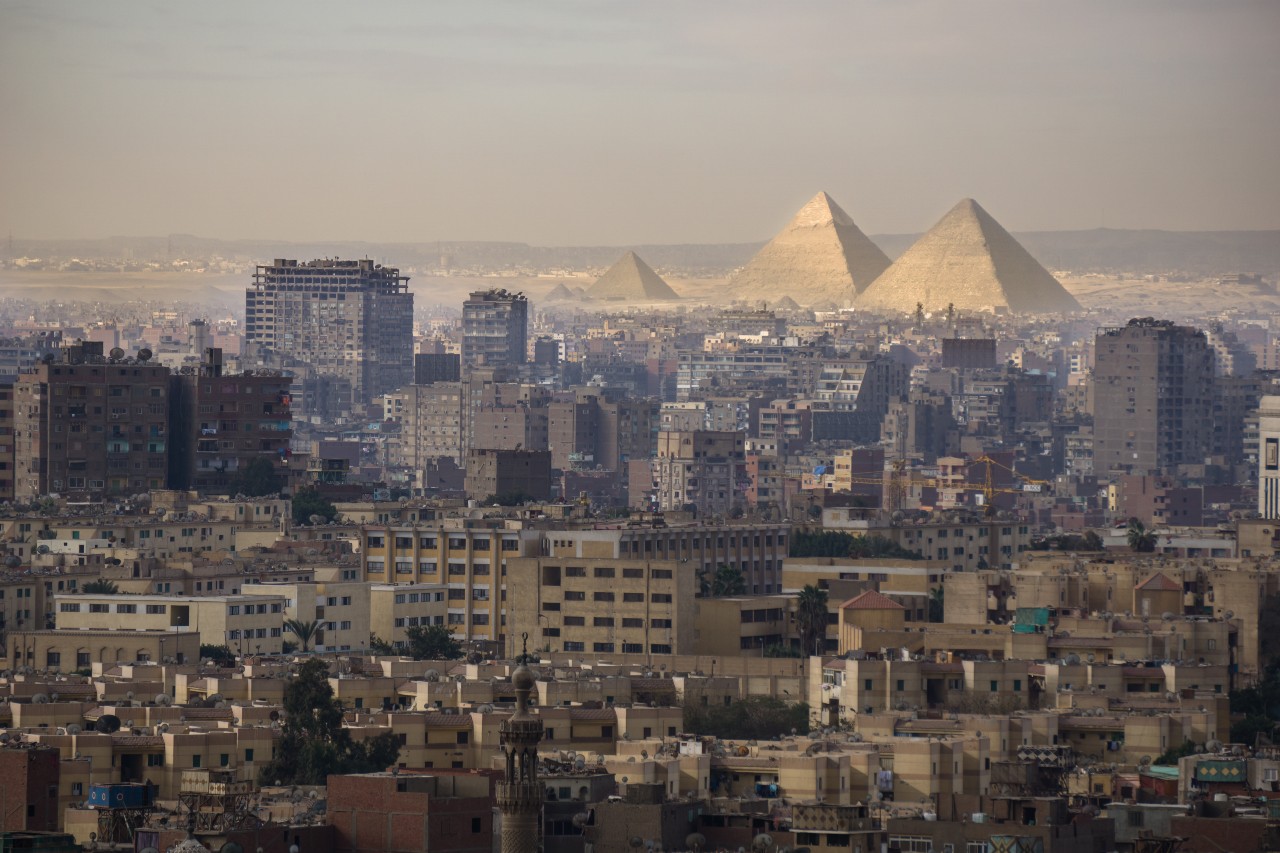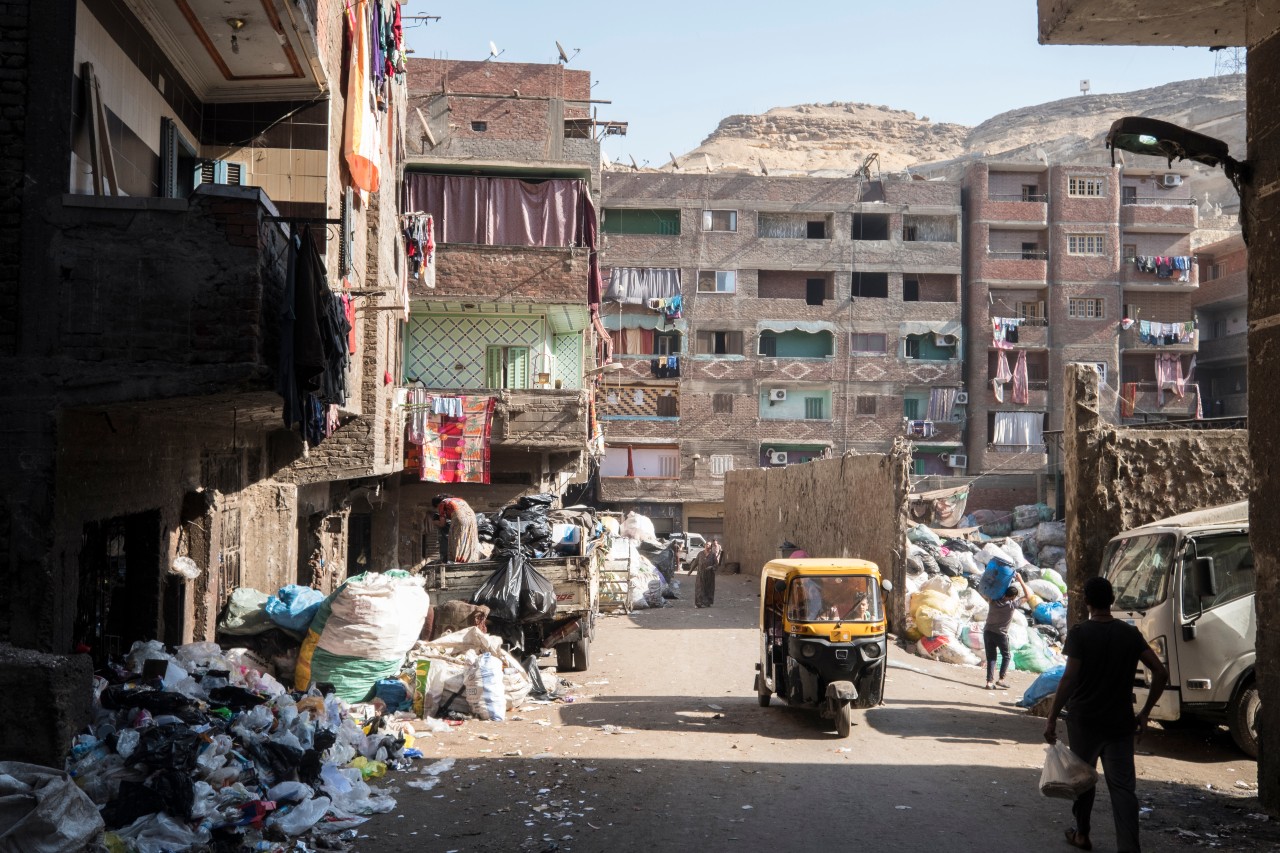Cairo is the capital of Egypt. The city’s metropolitan area is one of the largest in Africa, the largest in the Middle East, and the 15th-largest in the world, and is associated with ancient Egypt, as the famous Giza pyramid complex and the ancient city of Memphis are located in its geographical area. Located near the Nile Delta, modern Cairo was founded in 969 by the Fatimid dynasty, but the land composing the present-day city was the site of ancient national capitals whose remnants remain visible in parts of Old Cairo. Cairo has long been a center of the region’s political and cultural life, and is titled “the city of a thousand minarets”.
The Greater Cairo Area has a population of over 23 million spread over 3,000 square kilometers. It is growing by 0.5 million people every year, making it the fastest growing city in the world. Cairo is located in northern Egypt, known as Lower Egypt, 165 kilometers south of the Mediterranean Sea and 120 kilometers west of the Gulf of Suez and Suez Canal. The city lies along the Nile River, immediately south of the point where the river branches into the low-lying Nile Delta region.
Like other mega-cities, solid waste management is a huge challenge for Cairo municipality and other stakeholders. The city produces more than 15,000 tons of solid waste every day which is putting tremendous strain on city’s infrastructure. Waste collection services in Cairo are provided by formal as well as informal sectors. While local authorities, such as the Cairo Cleanliness and Beautification Authority (CCBA), form the formal public sector, the informal public sector is comprised of traditional garbage-collectors (the Zabbaleen), mainly descendants of farmers from Upper Egypt who moved to Cairo in the 1940s.
Around 60% of the solid waste is managed by formal as
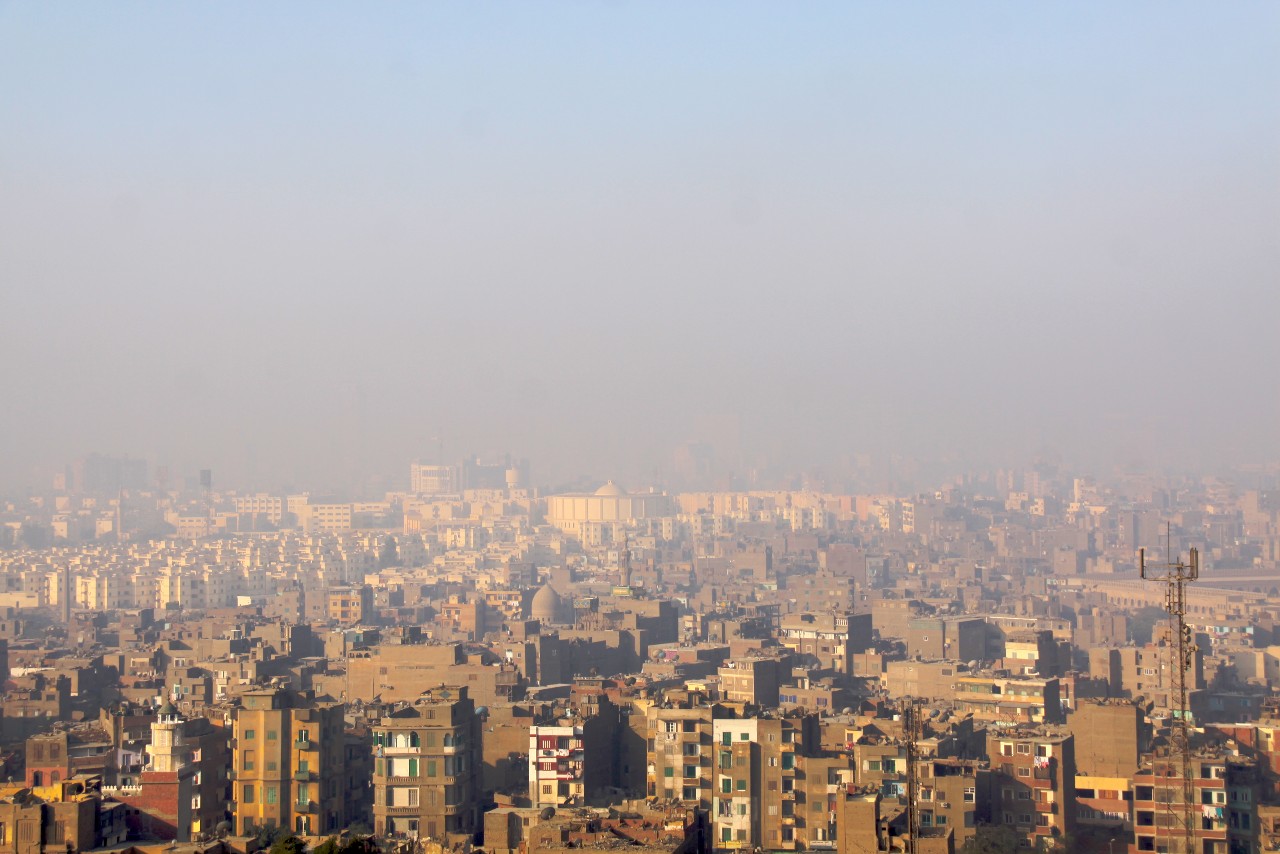 well as informal waste collection, disposal or recycling operations while the rest is thrown on city streets or at illegal dumpsites. The present waste management is causing serious ecological and public health problems in Cairo and adjoining areas. In fact, disposal of solid waste in water bodies has led to contamination of water supplies in several parts of the city. Waste collection in Cairo is subcontracted to ‘Zabbaleen’, local private companies, multinational companies or NGOs. The average collection rate ranges from 0% in slums to 90% in affluent residential areas.
well as informal waste collection, disposal or recycling operations while the rest is thrown on city streets or at illegal dumpsites. The present waste management is causing serious ecological and public health problems in Cairo and adjoining areas. In fact, disposal of solid waste in water bodies has led to contamination of water supplies in several parts of the city. Waste collection in Cairo is subcontracted to ‘Zabbaleen’, local private companies, multinational companies or NGOs. The average collection rate ranges from 0% in slums to 90% in affluent residential areas.
In recent years, the Egyptian Government has been moving away from the Zabbaleen system and towards centralized formal waste collection, where large multinational waste collection companies have been appointed to collect the waste in Cairo. This has led to inferior waste collection service and diminishing recycling rates. Significant as the impact has been on waste management in Cairo, the effect on the Zabbaleen’s way of life is even greater: they lost access to the garbage that is the foundation of their economic activities. Eventually, the private companies have realized that they need the Zabbaleen – not least to deal with the access issues that Cairo’s narrow alleys presented for the collection equipment they were trying to use – and brought them in as subcontractors.
While Egypt’s local and national authorities have struggled to find the right collection and recycling system, the role of the Egyptian population in improving waste management needs to be considered. Separating organic and non-organic waste will help keep any paper or board waste clean so that it can be recycled. Beyond this, there are more steps people can take to make their waste is recycled, especially in areas outside Cairo where Zabbaleen do not operate.
WOIMA has the perfect solution to support the Cairo with waste-to-value solutions, and reduce the waste-induced challenges. We have developed a decentralized waste management and power generation solution named “WOIMA Ecosystem” that helps countries and cities to cope with the increasing waste challenges that they are facing. WOIMA Ecosystem recycles the waste into raw materials and energy in the most efficient manner reducing the waste quantity by over 95%. The small-to-medium size WOIMA Ecosystems are distributed close to where the waste is generated, thus offering significant waste logistics and power distribution savings in addition to solving the waste problem.
محطة طاقة نموذجية لتحويل النفايات إلى طاق ة
Read more: Woima decentralized W2E power generation – case study Nairobi Kenya
Contact WOIMA, if you see yourself as collaboration partner in saving the planet. Ask more about turning waste into wellbeing with WOIMA Circular Economy Solutions.

